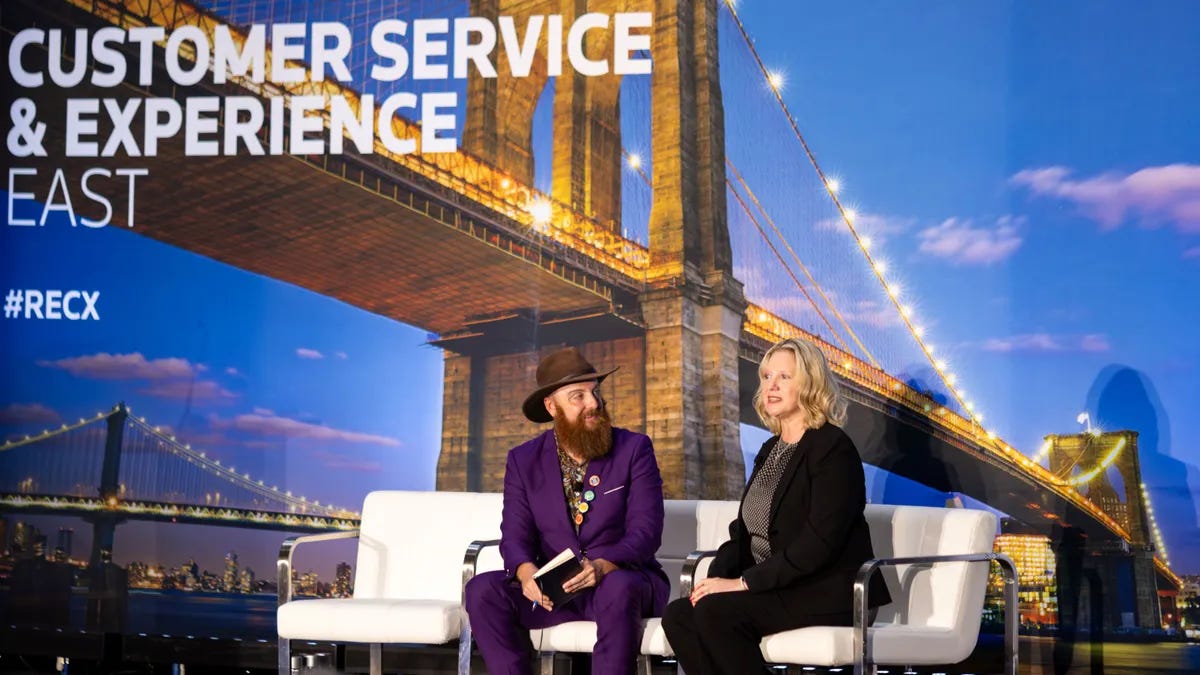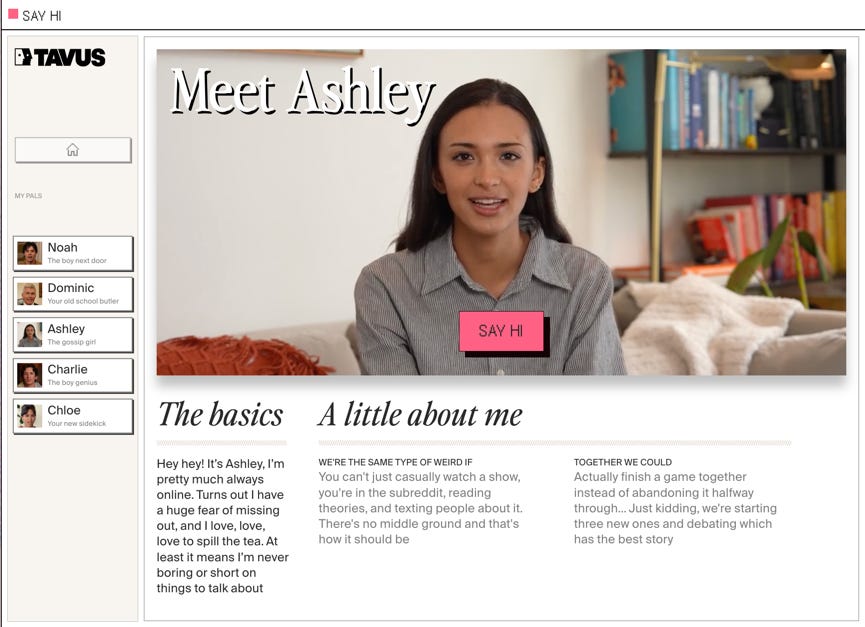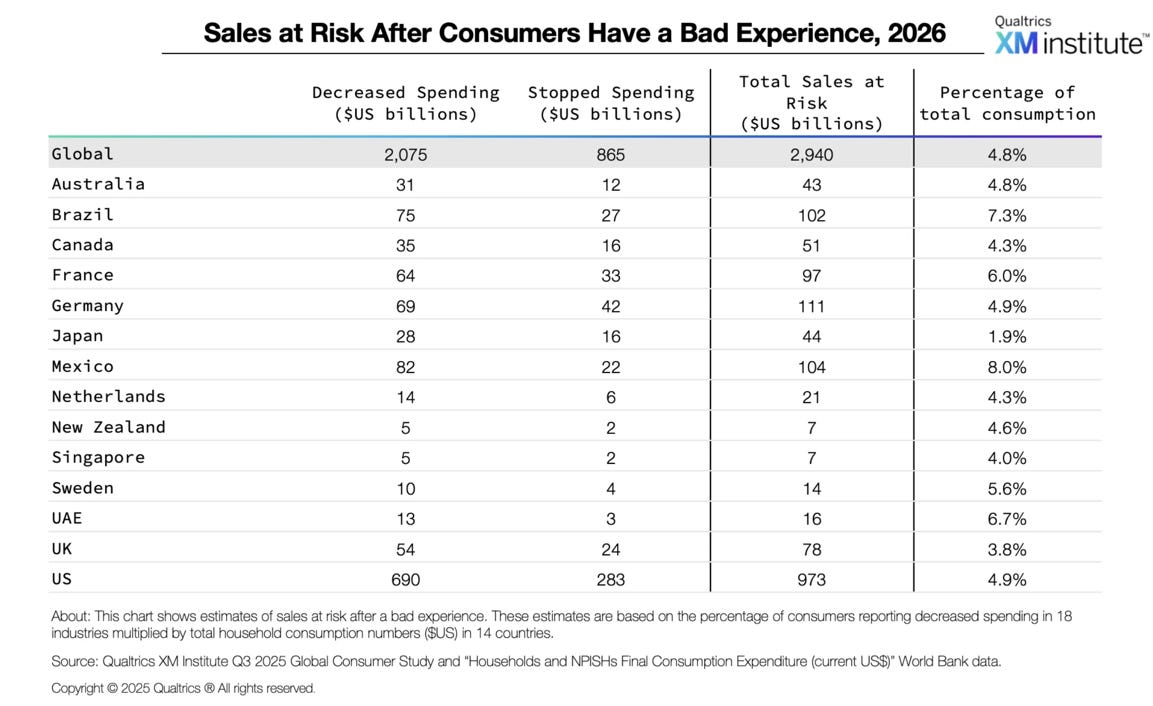DCX Links | November 16, 2025
The smallest moments usually carry the biggest weight
Welcome to the DCX weekly roundup of customer experience insights!
Lately, I’ve been thinking about how far we’ve drifted from the core of great customer experience. Somewhere along the way, we started equating “efficient” with “better,” and in doing so, we lost something essential—presence.
What’s becoming clearer to me is this: the future of CX isn’t more tech. It’s better judgment about when to use it. The best teams I see right now aren’t obsessed with automation—they’re obsessed with earning trust. They know that real connection isn’t scalable by accident. It’s built through deliberate choices, small signals, and the discipline to protect human moments when they matter most.
There’s also a growing financial reality we can’t ignore. Poor experiences aren’t just frustrating—they’re expensive. Revenue is leaking because companies are optimizing processes instead of relationships. That’s the kind of risk leadership can’t afford to see as “just CX” anymore.
What I keep coming back to is this:
Are we designing experiences that feel human, or just functional?
Are we letting frontline teams lead with care, or with KPIs?
Are we still pretending customers don’t notice the difference?
Because they do. And in this climate, where trust is scarce and attention is earned, those differences aren’t cosmetic—they’re competitive.
I’m paying close attention to the companies that are choosing presence over polish, context over convenience, and trust over throughput. That’s where the real CX advantage lives right now.
This week’s must-read links:
Smile, You’re at Target Now
Nordstrom Is Betting Big on Something Radical These Days: Actual Human Care
Would You Like To Be My PAL?
Voice Agents Are Finally Growing Up
DCX Stat of the Week: Nearly $3T at risk from bad experiences
DCX Case Study: Kraft Heinz lifts conversions with geo-personalized CX
Smile, You're at Target Now
Target is rolling out a “10-4” policy across its stores, asking employees to smile, wave, and greet customers as they enter a 10-foot and 4-foot radius. The move signals that the retailer sees frontline behavior as a strategic lever heading into peak season.
Why it matters:
CX pros know the basics often get ignored. A simple human cue can shift how safe, welcomed, and supported a shopper feels.
Target is facing traffic declines and operational pressure. When the financial story tightens, companies often rediscover service fundamentals.
Policies like this test whether leadership believes customer experience is a cost or an investment.
State of play:
The 10-4 push lands right as early Black Friday sales kick off and holiday foot traffic increases.
McKinsey reports two-thirds of Americans start holiday shopping before Black Friday, raising the stakes for in-store experience.
Target reported better-than-expected Q2 revenue and earnings, yet saw declines in both store and digital traffic.
Between the lines:
This isn’t only about greetings. It’s about rebuilding trust after a year of inflation concerns, boycotts, and an 8 percent corporate workforce cut.
When traffic softens, retailers often shift from efficiency mode to connection mode. The question is whether it sticks after the holiday rush.
The CX To-Do:
If you run physical locations or field teams, audit the small behaviors. Smiles, greetings, acknowledgment. These influence conversion more than campaigns. 🔗
🔗 Go Deeper: Fast Company
Nordstrom Is Betting Big on Something Radical These Days: Actual Human Care
Nordstrom’s sales are still climbing, and Heather Bissell, who runs customer care, says the reason is simple. People feel cared for. Not “the bot did a nice job” cared for. The real kind. The kind that happens when someone looks you in the eye, listens, and follows through.
Why it matters:
Most retailers are racing to automate every corner of the experience. Nordstrom is slowing down the moments that matter.
Customers want convenience, but they also want reassurance. When something feels personal or high-stakes, they want a human.
CX pros can take note: the edge isn’t more tech for its own sake. It’s being clear about where tech helps and where it gets in the way.
What they’re doing:
No IVR. You call, you get a person. That’s intentional, not old-fashioned.
They’re rolling out AI for one use case: giving accurate delivery updates during the holidays. It handles the easy stuff, then loops in a human when needed.
Frontline teams helped design the AI handoff so the workflow feels natural instead of forced.
How they run the operation:
Reps aren’t managed by handle time or QA scores. They’re coached on five values and how those values show up in real conversations.
Leaders listen to calls and have straight, behavioral coaching discussions with agents.
Customers notice. They keep sending letters about shopping trips with parents and grandparents, and now bringing their own kids in.
The CX To-Do:
Get crystal clear on the moments in your journey where only a human can create trust. Protect those. Let AI support everything around them.
🔗 Go Deeper: CX Dive
Would You Like To Be My PAL?
Tavus is pushing a bold idea with its new PALs platform: AI that feels less like a tool and more like someone you can actually talk to. Not a chatbot buried in a help center. A presence that chats, calls, or even joins you on video with emotional cues baked in.
Why it matters:
PALs aren’t single-channel bots. They move across chat, voice, and video, which means they can sit closer to how people naturally communicate.
They’re designed to act, not just answer. They can schedule meetings, send emails, and handle simple tasks, which shifts them from “support” to “partner.”
Tavus is trying to solve a real CX gap: digital interactions often feel efficient but emotionally flat. PALs aim to close that distance.
What’s happening:
The first five PALs have personalities and communication styles so users can “pick who they vibe with.”
The product is still in beta, and Tavus is open about the risks and rough edges.
They just raised another $40M to fuel the broader “human computing” push, which is all about making AI feel intuitive, expressive, and less robotic.
The deeper signal:
CX leaders should pay attention. If PALs work as promised, we’re looking at a different category of agentic AI—one that blends logic with emotional presence. The upside is connection. The risk is overpromising “human” qualities before they’re reliable.
The CX To-Do:
Test this in journeys where tone and trust matter: post-purchase follow-ups, onboarding support, or loyalty touchpoints. See whether a more human-feeling AI changes the emotional temperature of the experience.
🔗Go Deeper: Tavus.io
Voice Agents Are Finally Growing Up
This talk from Deepgram’s Anoop Dawar hits on something CX teams have been circling for years: voice bots have always felt close, but never quite usable in the real world. Latency was slow. Accuracy was shaky. Interruptions were constant. And once you tried to scale? Everything fell apart. The argument here is simple: that era is ending.
Why it matters:
Most customer interactions still happen through voice, and a huge chunk of them don’t require a human.
The economics are massive. There’s roughly $700 billion in call-center labor spend today with attrition around 67 percent. AI won’t replace the work that requires empathy, but it can handle the repetitive work humans don’t want.
CX leaders need voice agents that feel natural. The bar is rising fast because customers now talk to human-sounding AI outside of work every day.
What’s happening:
Deepgram positions itself as the infrastructure layer: transcription, real-time speech-to-text, text-to-speech, and the APIs needed to build actual voice agents.
The real challenge isn’t the LLM. It’s all the invisible plumbing around it: latency, turn-taking, interruptions, observability, and the ability to understand when someone isn’t actually done speaking.
Their new system, Flux, bundles three hard problems into one package: real-time streaming speech-to-text, voice activity detection, and “end-of-turn” detection. It’s the combination that makes conversations feel smooth instead of brittle.
The deeper signal:
This is less about replacing agents and more about making voice AI feel like a competent partner instead of a clunky toy.
The next frontier is speech-to-speech models that don’t just process words but capture emotion, tone, intent, and nuance.
We’re heading toward an “audio Turing test” where the challenge isn’t whether the words sound right, but whether the rhythm, pauses, and inflection feel human enough for a natural back-and-forth.
The CX To-Do:
If voice is part of your customer journey, start testing where low-stakes, high-volume calls can be automated without hurting trust. The biggest wins will come from removing friction, not faking humanness.
🔗 Go Deeper: Deepgram
DCX Stat of the Week
Nearly $3T at risk from bad experiences
DCX Stat: Organizations globally face up to $2.94 trillion in 2026 revenue at risk because 11% of customer experiences are bad and 47% of those lead to reduced spending.
Of that: $2.10 trillion from customers cutting back.
$865 billion from customers leaving entirely.
For U.S. organizations alone, the risk is $973 billion.
Takeaway: When CX misfires aren’t isolated incidents but a systemic drain on revenue, framing CX work as risk mitigation buys strategic traction. Map critical moments, quantify how they cost you today, and make them front-of-mind for leadership.
Source: Qualtrics XM Institute
🔗 Go Deeper: Bad experiences across 18 industries, 2026
🔗 MORE STATS: Daily Stats on Substack Notes
DCX Case Study of the Week
Kraft Heinz lifts conversions with geo-personalized CX
CX Challenge:
Global CPG giant Kraft Heinz needed to modernize its digital experience across 200+ brands and move away from generic, one-size-fits-all content that wasn’t driving conversion or satisfaction.
Action Taken:
Partnered with Contentful and Ninetailed to deploy location-based personalization across web experiences. Homepage banners, product modules, and CTAs were dynamically tailored to each visitor’s geolocation, making content locally relevant at scale.
Result:
78% increase in conversions
30% increase in engagement
28% increase in customer satisfaction
Lesson for CX Pros:
Personalization earns its keep when it’s connected to context. Start with one high-impact surface (e.g., homepage), use geo or behavior signals to adapt content, and track impact on both conversion and CSAT, not just clicks.
Quote:
“Relevant content, delivered in context, turned our digital presence from generic to genuinely engaging.” — Case summary of Kraft Heinz program via Contentful/Ninetailed
🔗 Further Reading: Contentful case section on Kraft Heinz
Have a case study to share? Reply and let me know!
🔚 Final Thought
What ties all of this together isn’t a new tool or trend—it’s a shift in intention.
Customers aren’t asking for perfection. They’re asking for presence. For experiences that feel thoughtful, not templated. For people—and systems—that actually care.
In a space crowded with automation, the real differentiator is discernment. Knowing when to use tech, and knowing when to step back and let a human lead.
Because in the end, it’s not about doing more. It’s about doing what matters. With clarity. With care. With purpose.
Until next week.
Thank you!
If this edition sparked ideas, share it with a colleague or team member. Let’s grow the DCX community together!
👋 Let’s Talk
I didn’t create this newsletter to just push out ideas. I created it because I believe the people building experiences — the ones in the trenches, solving real problems — don’t get nearly enough space to think, reflect, and connect.
And if I’m honest… the part that matters most to me isn’t the writing. It’s you — the person reading it.
So if something in here resonated, challenged you, or even just made you pause — I’d love to hear from you.
Got feedback? Tell me what landed, what didn’t, or what you wish I’d cover next.
Facing a tough challenge? Reach out. Whether it’s strategy, team dynamics, or just feeling stuck — let’s talk it through.
Just want to say hey? Please do. I genuinely enjoy connecting with people who care about this work as much as I do.
No ego. No fluff. Just real conversations with real people trying to build better things.
DMs, emails, comments — they’re always open.
— Mark
www.marklevy.co
Follow me on Linkedin
✉️ Join 1,440+ CX leaders who stay ahead of the next customer curve.
Human-centered insights. Plug-and-play frameworks. Smart tools that actually work.
All designed for CX pros who want to build with purpose—and deliver with impact.
👉 Subscribe today and get the tools to elevate your strategy (and your sanity).








